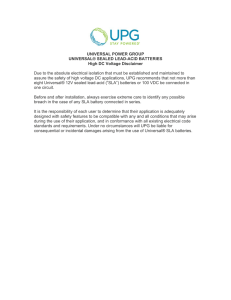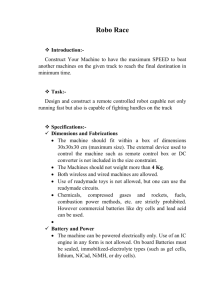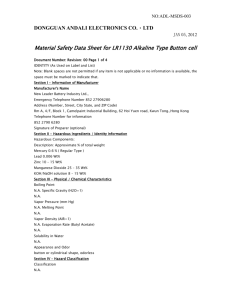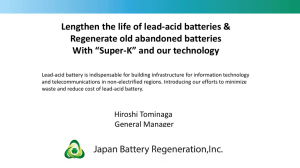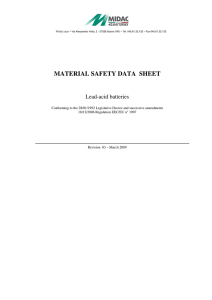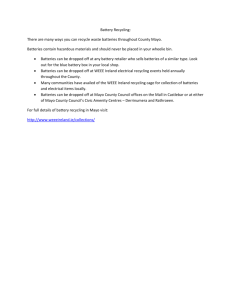COSHH SHEET 24
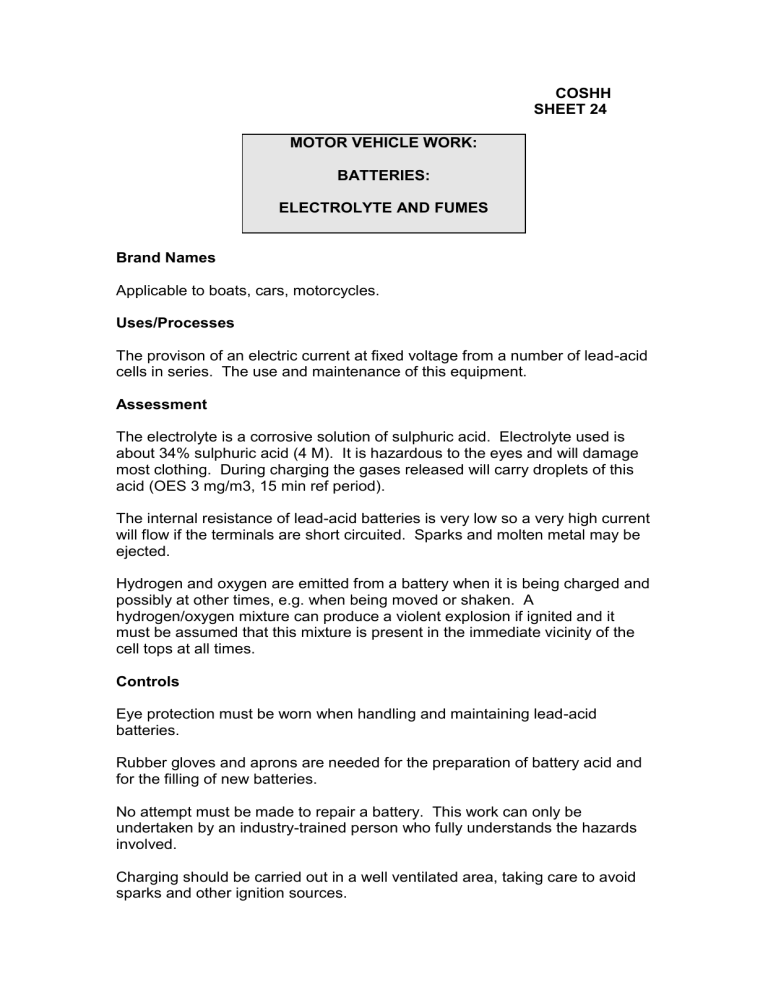
COSHH
SHEET 24
MOTOR VEHICLE WORK:
BATTERIES:
ELECTROLYTE AND FUMES
Brand Names
Applicable to boats, cars, motorcycles.
Uses/Processes
The provison of an electric current at fixed voltage from a number of lead-acid cells in series. The use and maintenance of this equipment.
Assessment
The electrolyte is a corrosive solution of sulphuric acid. Electrolyte used is about 34% sulphuric acid (4 M). It is hazardous to the eyes and will damage most clothing. During charging the gases released will carry droplets of this acid (OES 3 mg/m3, 15 min ref period).
The internal resistance of lead-acid batteries is very low so a very high current will flow if the terminals are short circuited. Sparks and molten metal may be ejected.
Hydrogen and oxygen are emitted from a battery when it is being charged and possibly at other times, e.g. when being moved or shaken. A hydrogen/oxygen mixture can produce a violent explosion if ignited and it must be assumed that this mixture is present in the immediate vicinity of the cell tops at all times.
Controls
Eye protection must be worn when handling and maintaining lead-acid batteries.
Rubber gloves and aprons are needed for the preparation of battery acid and for the filling of new batteries.
No attempt must be made to repair a battery. This work can only be undertaken by an industry-trained person who fully understands the hazards involved.
Charging should be carried out in a well ventilated area, taking care to avoid sparks and other ignition sources.
Storage
Batteries should be stored in ventilated areas. Stock acids should be stored at low level in a store where they are not likely to be kicked.
Disposal
The acid may be poured slowly into a very large volume of water, neutralised with sodium carbonate (added until it stops fizzing) and flushed away. The empty battery may then be rinsed and sold as scrap for recycling.
Immediate Remedial Measures
If acid is splashed into the eyes: Irrigate immediately with water for at least ten minutes, holding eyelids apart. Obtain medical attention.
If acid is splashed onto the skin: Wash off immediately with plenty of water, removing any contaminated clothing.
If spilt in the workshop: Ensure suitable personal protection during removal of any spill. Small spills may be swilled away with volumes of water.
Alternatively, contain the spill with sand, earth or any absorbent other than sawdust and add sodium carbonate (soda ash) to neutralise it before scooping it into a bucket. Add water and stir, then leave to settle. Pour off the water, flushing it away down a toilet. The wet absorbent can be tipped into a strong plastic bag which is disposed of in the ordinary waste.


